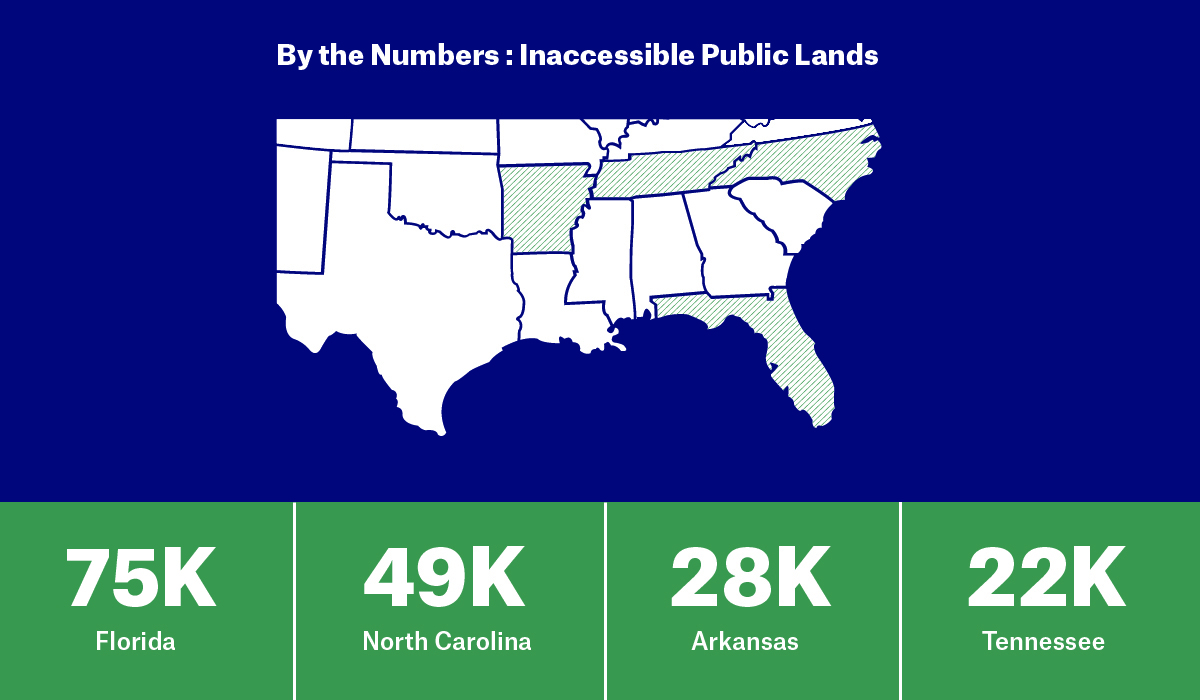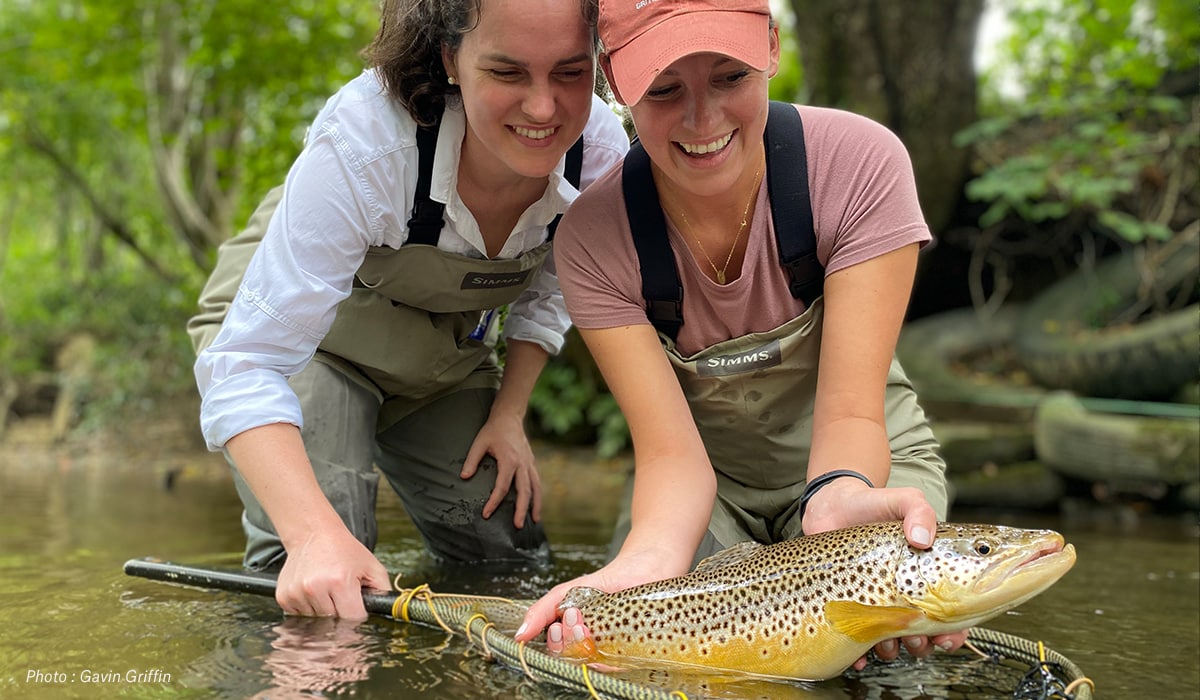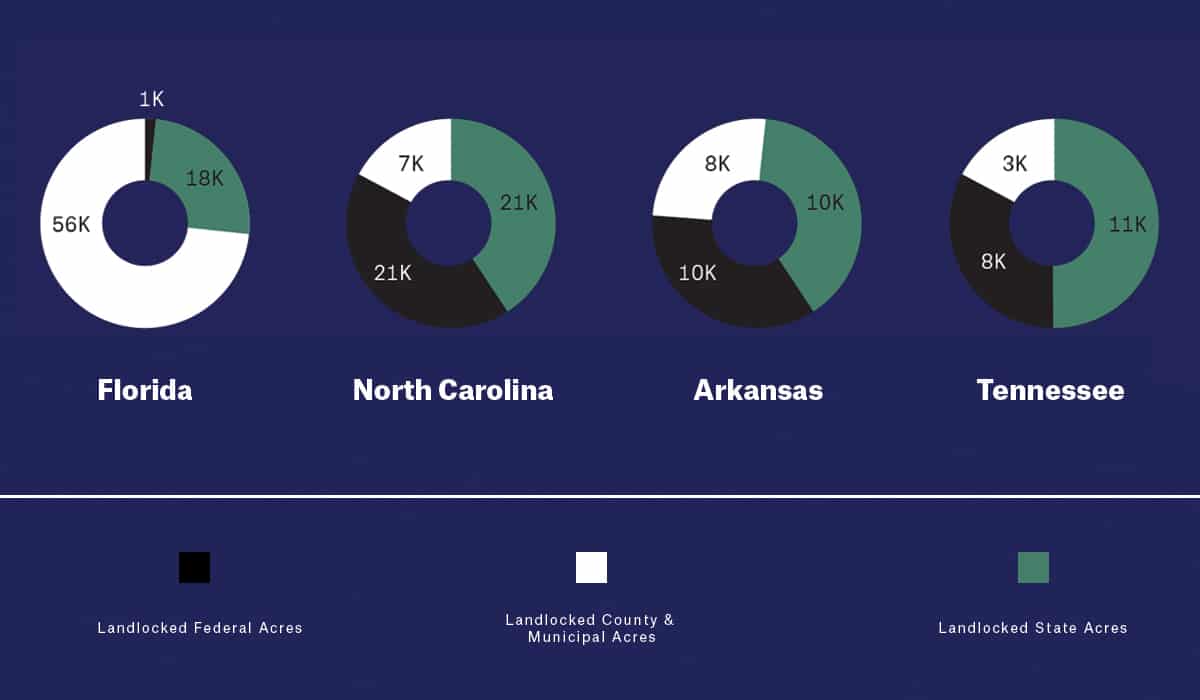Report: The South’s Landlocked Public Lands
In the third installment of our landlocked reports with the Theodore Roosevelt Conservation Partnership (TRCP), we are highlighting more than 174,000 acres of public land in Florida, North Carolina, Arkansas, and Tennessee with no permanent, legal access for public outdoor recreation.
To date, onX and the TRCP have identified 16.42 million acres of landlocked public lands in 22 states. In the Upper-Midwest, we have found over 300,000 acres landlocked. In the Mid-Atlantic, over 80,000 acres of public lands are inaccessible because of being surrounded by private properties. In the South, a diverse history of treaties and survey systems has had significant implications for the way that public lands were organized and why so many acres do not offer legal access for hunting or fishing.

This new report from the TRCP and onX for the South notes:
“Following the Civil War, Congress enacted the Southern Homestead Act to reduce speculation and encourage land ownership among formerly enslaved people, but the law was repealed in 1876 as the Reconstruction Era came to an end. As a result, the remaining federal estate in the South was subject to massive land sales in which timber and mineral interests accumulated huge swaths of forests.
The 1930s saw the establishment of state forests and parks, in part with the help of Civilian Conservation Corps workers, who built facilities and infrastructure.
The result of all of this is today’s unique system of county, state, and federal land holdings and, unfortunately, a remnant patchwork of landlocked public lands.”
As we dig deeper into the four states featured in this landlocked report, we see that each has its own challenges and unique opportunities for improvement thanks to the efforts by key organizations.
Florida
With 75,000 landlocked acres inaccessible to the public, Florida has the most publicly-inaccessible land among the states in the South we analyzed. Working to make more public lands available for outdoor recreation is Florida Forever, a major conservation and recreational lands acquisition program that has been used by the state since 2001 to open 818,000 acres to the public with $3.1 billion in funding.
North Carolina
When settled, North Carolina used an older survey system called “metes and bounds” to create most of its property lines by following geographic features and other landmarks. Today, the state has been left with 49,000 acres identified as landlocked. Work by the North Carolina Land and Water Fund to protect the state’s drinking water sources has expanded to include other conservation and recreation needs, such as boosting public access. In 2020, $11 million was appropriated through the program for land acquisition so more people in the state can hunt and fish.

Arkansas
In Arkansas, 28,000 federal, state, county, and municipal acres remain totally landlocked. Of those acres, 10,000 are adjacent to water, leaving a lot of potential hunting and fishing grounds inaccessible. Thanks to the Arkansas Natural and Cultural Resources Council, which was established in 1987 to manage and supervise grants and a trust fund for the acquisition, management, and stewardship of state-owned properties, $20 million is funded annually to acquire more lands for natural areas, state parks, and state forests.
Tennessee
Of the 22,000 acres of landlocked public lands, over half (15,000) are adjacent to water. Fighting to acquire and protect wetlands and other habitats across the state, Tennessee created the state Wetland Fund in 1987. The program makes public access a priority with new land acquisitions. Typically funded at between $12 million and $19 million each year, the
Wetland Fund is an effective tool that could be applied to unlock inaccessible public lands for generations to come.

You can help the cause. You can write and call your state’s representatives to let them know why it’s important to have access to public lands. You can also identify areas of opportunity in your area and share land access opportunities with onX. Together we can open up more lands for hunting and fishing.
Ready to learn more about the South’s landlocked acres? Read the full South’s Landlocked Public Lands Report here.